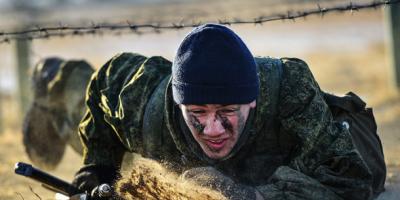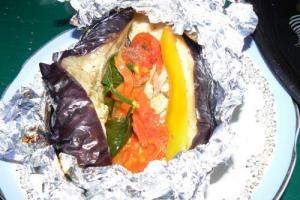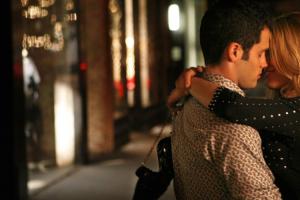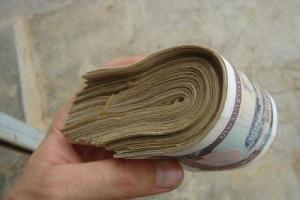The holiday begins with a feast! And no one will argue with this for sure. We have long been accustomed to immediately remembering food, drinks and desserts when we talk about the past holiday.
If some kind of celebration is being prepared, they also first of all think about the festive table and various dishes. But the decoration of the table and the arrangement of dishes also play a huge role!
Beautiful serving festive table can completely transform a holiday, take the event to a completely different level. At the same time, you are not supposed to arrange dishes, arrange forks and spoons in a random order. It is important to know whole line nuances.
Over the years, people have already managed to develop unique “formulas”, the observance of which ensures comfort at the festive table for everyone. Serving is a real art. Remember the main nuances so that your table is truly elegant. Some interesting ideas decorating the holiday table will also always come in handy.
Basic rules for serving a holiday table
Let's immediately note a few nuances. These rules are universal for any table setting, regardless of the occasion for the holiday. It is important to pay attention to the choice of serving items. They should reflect the thematic focus of the feast and fit into the interior and design of the room as harmoniously as possible.
You should select dishes, napkins, plates and cutlery according to color, shape and materials, design, so that all items together create a single ensemble. It is advisable to avoid dissonance. You also need to take into account the color of textiles: tablecloths, napkins.

It is worth remembering that setting a festive table is needed not only to create a pleasant atmosphere and a special festive mood, but also to ensure comfort. Each guest should be comfortable using dishes, cutlery, and napkins. To do this, the placement of all objects is thought out, and the optimal distances between them are determined.
There is also traditional sequence, where the festive table is usually served.

Vases with flowers will become worthy decoration any holiday table. Even at business lunches and official receptions, they are mandatory elements of table decoration.
Remember that cutlery and glassware must be more than just clean. On a properly set holiday table, these items are sure to sparkle. To do this, they are first washed, then thoroughly dried, and then polished with napkins until shiny.
Plates for serving the festive table
Please note: the plates themselves can be real works of art, true table decorations. Sometimes it is they who determine the thematic focus of the feast. Therefore, approach the choice of plates and sets carefully. For special occasions, you can purchase dishes separately.

Of course, it is important to remember how arrange the plates correctly during table setting.
- Smooth the tablecloth again, make sure there are no wrinkles or litter on it. Start arranging. There should be plates in front of each guest. You cannot place them on the very edge of the table. The approximate distance from the plate to the edge is usually two centimeters. Professional waiters instantly determine the required distance from the edge of the table by placing their middle and index fingers between it and the plate.
- When the occasion is solemn, it is worth using the so-called “double plates”. You first place a small dinner plate, and then place the snack plate on it. Since the plate should not slide, you need to place a napkin between the dishes.
- There are also special pie plates, which are located to the left of the main ones. The distance from the pie plate to the snack bar should be 5-12 cm.
- If the feast is especially solemn, all the edges of the plates are placed on the same line, clearly. This is how small and pie plates are lined up.
The centers of all plates must be located along the same line.
Place your plates correctly. Be sure to take into account that there will be vases, salad bowls, and cutlery on the table. Each guest should feel comfortable and be able to move calmly without touching their neighbors at the table.
Cutlery for serving a festive table
Now it's time to learn how to properly place cutlery for a festive table setting. IN ordinary life We are used to reducing the number of forks and spoons to a minimum and placing cutlery in random order. But when festive table setting this approach should be avoided. Remember all the details.

There is no need to arrange all the devices in a row. If the menu only has appetizers, you won't need cutlery. They are needed only for main hot courses.
All cutlery should be perpendicular to the edge of the table, parallel to each other.
When dessert utensils are required, they should be placed in front of the plate. First the knife, then the fork and spoon. The fork handle turns to the left, and the spoon and knife handles turn to the right.
Glassware plays a huge role on every table. Wine glasses and glasses decorate the table and become eye-catching decorative details. At the same time, their practical function is also important. For example, the comfort of guests can largely depend on the shape of the glasses. Some models are uncomfortable to drink from, some don’t fit well in the palm.

Let's learn how to properly arrange glassware.
- You can place glassware in the center, to the right of the plates. If the wine glass is placed in the center, it should be behind the plate. When they want to place a wine glass on the right, it should be placed in the place where the end of the first knife intersects with the upper edge of the plate. Mineral water and juice are poured into this glass.
- For fruit drinks and kvass, you need to put a mug. The handle is turned to the right.
- Glass, glass for alcoholic drinks placed to the right of the main wine glass. When the assortment of drinks is large, the wine glass should be placed on the left, and all glassware for alcohol should be placed to the right of the plate.
- You should not place more than three items in one row. This already creates discomfort and looks ugly.
The distance between wine glasses and glasses should be approximately one centimeter.
Glasses, shot glasses, wine glasses for table setting
Spaciousness and view glassware depend on what drink will be in it.
In accordance with the rules of etiquette, it is customary to assign a separate glass for each drink.
For vodka, use a regular glass, for fortified wine, a Madeira glass. A separate glass is reserved for dry white wine. Champagne is poured into glasses with a capacity of 180-210 ml. If dry red wine is served, it should be accompanied by a special Rhine wine glass. Juices and water are poured into a glass, the capacity of which can be 250-350 ml.
It’s great if all the glasses and wine glasses are in harmony with each other.
Napkins also occupy a prominent place in table settings. They can give the entire table a special look and create a thematic design. Interestingly, folding napkins is a whole science. You can create peacocks, water lilies, candles and ties from them.

It is important to select napkins by color and size so that they are in harmony with the tablecloth, dishes, and the interior of the room in which the special event is being held. Then the feast will be magnificent. It is believed that when setting the table it is necessary to use cloth napkins.

It’s good when they harmonize with the tablecloth in color and texture. Sometimes they immediately purchase sets that include textiles for serving. However, the original design solutions are also in demand. For example, napkins and tablecloth contrast. But napkins should still be combined with dishes, vases or plates.

Use clean, starched napkins. Usually the napkin is placed on a plate; you can place it on the right.
It is not customary to wipe your mouth with cloth napkins. These accessories serve a decorative function and are sometimes placed on the knees.
Paper ones are used for hygienic purposes.
Holiday table setting ideas
Tables are set in different ways. Any holiday table can be given an extraordinary, memorable look, and the decor can be themed.
The table setting deserves special attention for a romantic dinner. A woman will be able to capture the imagination of her beloved if she creates such a small miracle on the table. It is better to avoid too bright colors and stick to a few primary colors.

For example, red plates, napkins, flowers and candles of the same shade will be in perfect harmony with red glasses. Fits perfectly into this table setting decorative heart, golden cutlery, white plates and transparent wine glasses, a snow-white flower vase.
The table setting looks very original in nautical style. It is suitable for lunch with family friends, New Year's breakfasts. A decorative light tree in a blue vase is placed in the center of the table; the surface of the table is decorated with a delicate blue cloth.

Transparent glasses harmonize perfectly with white plates and glass vases for dessert, light napkins. On the plates are small plates of bright turquoise color in the shape of shells.
The festive table is also decorated in an original way. New Year. If friends decide have a snack before New Year's Eve , you can limit yourself to the arrangement of basic cutlery, white plates and transparent glasses. The main decoration will be gifts in translucent fabric, placed on plates on napkins, and a festive composition of red candles and artificial pine needles.

Well designed New Year's table when the table setting contrasts shades of brown, beige and green. Bright Christmas balls in a white plate can become a real table decoration. Napkins are sometimes placed in the form of wallets. This is how accessories become symbols of prosperity in the coming year.


You can come up with your own ways to serve the holiday table. Take into account all the nuances, remember the rules. Then any festive feast will go perfectly.
Master class - how to properly set a festive table:
But few people understood them in more detail. For many, it is enough that they know which hand to hold a knife and which to hold a fork. However, this is very little. In this article I would like to talk about how to behave correctly at the table.
About etiquette
First of all, it must be said that there are different types behavior in a particular institution and even in a particular country. If you figure out how to eat beautifully, this question will be completely the same for European countries, in which you need to be as quiet as possible at the table, and for Asian countries, where gratitude to the host for a delicious dinner is expressed by loud slurping and smacking. Also, behavior in a restaurant and when visiting relatives at the table may be slightly different.
Restaurant etiquette
Understanding how to eat beautifully is very important for those people who visit various restaurants from time to time. So, it is important to behave correctly immediately after crossing the threshold of the establishment. It is important to remember that the head waiter meets guests, tells them if there are free seats, and leads them to their desired table. It is also his responsibility to pick up outerwear visitors. Approaching the table, the man (if guests of different sexes have arrived) must first help the lady sit down, moving her chair a little, then he sits down himself. It is also important to remember how to sit properly at the table. As for the position, the representative of the stronger sex should be opposite the woman or to her left. If the lady is a little late, the man can take a place at the table, but when the head waiter leads her to the appointed place, the guy must stand up as a sign of respect.

Order selection
When the couple is already at the table, the waiter always serves the menu. You should take your time choosing the dishes you want; in such establishments it is not customary to rush. Most often, the waiter will see that the guests are ready to order something and will come over. But you can also call the service personnel to you with a slight movement of your hand. The order is made first by the woman, only then by the man. However, a lady can ask a guy to do it for her, this is also allowed. If guests cannot decide on the choice of wine, they can ask the waiter for advice. You can also consult with him about a particular dish; this is permitted by the rules of etiquette.

Expectation
How to behave at the table while the order has not yet arrived? During this time, guests can chat quietly. The waiter will most likely bring the wine first. Only the restaurant employee uncorks the bottles; a man should not rush out of his seat to do this. First the drink is served to the ladies, then to the guys. As for food, you can start eating only after everyone at the table has already ordered dishes.
Rules
While understanding how to eat beautifully, it is also important to remember that in restaurants it is strictly forbidden to pick up fallen objects from the floor. The waiter will do this. He must bring a clean device. If an embarrassment occurs and, for example, a plate or glass breaks, do not worry. The restaurant will simply add its cost to the bill, and the case will be closed. No one will make scandals about this. If you want to add salt to a dish, and the salt shaker is on the other side of the table, you shouldn’t reach for it yourself, you need to ask the person sitting nearby to simply serve what you need. It is also important to remember about decibels: you need to speak in a restaurant in such a way as not to disturb others.
How to sit
When figuring out how to eat beautifully, it is important to remember that you need to sit correctly at the table. Thus, it is forbidden to put your elbows on the table, to lounge on a chair, or to swing on it. You should also not lean low over the plate. The back of the person sitting should be straight, and there is no need to slouch. However, there should be no tension or rigidity in your posture, everything should be natural. When the dish is changed, the guest is allowed to lean back a little so as not to disturb the waiter and rest a little in a comfortable position.

About food
It is worth remembering that in restaurants it is not customary to rush, dishes are eaten slowly in order to enjoy them taste qualities. If the food is quite hot, you should not blow on it. To cool it down, you just need to wait a little while maintaining a conversation. If you are burned by burning food, you should not put a napkin or your hands in your mouth, you can only wash it all down with water. It is strictly forbidden to spit out or remove from the mouth with your hands various seeds, including fruit ones. A fork is designed for this, which is carefully brought to the mouth and everything unnecessary is put there. If a person doesn’t like the taste of the dish at all, you can bring a napkin close to your mouth and spit everything out without attracting the attention of others with indignation about this.
If you need to step away
The culture of table behavior also has its own recommendations regarding mobile phones. So, if a guest receives a call, he can briefly say that he will call back without leaving his seat. However, if the conversation is urgent, you should definitely leave. Talking on the phone at the table is bad manners. Also, if you need to leave, for example, to go to the restroom, you need to ask permission from everyone present at the table. You should also not talk to people sitting at the next table. If these are comrades or you just need to ask something, you need to get up and approach them. When friends enter a restaurant, they should be greeted while sitting and with a slight nod of the head. A man stands up only if a lady joins his table. Women do not move in any situation.

End of the meal
When the dinner has come to an end, the guests are full and satisfied, they can ask the waiter for the bill, which will mean that their stay in this establishment has come to an end. The service will bring a folder containing the invoice. It is also important to remember about tipping - 10% of the order value. Who should pay is another question. So, in the countries of the post-Soviet space this is done mainly by men. In European countries, women actively fight against this, considering it a relic of the past, and there everyone pays for themselves. If the dinner was just friendly, you can ask the waiter in advance to bring a personal bill, separate for each person. It is also important to remember about surrender. If it is necessary, the person simply remains silent. If there is money in the folder, some of which does not need to be returned, you just need to say: “No change,” and that’s the end of the matter. It is important to remember that you need to decide who will pay in advance; it is rude to do this in front of the waiter. You also need to know who to voice your complaints to. The head waiter, not the waiter, needs to talk about everything you liked or didn’t like.
Cutlery
But if all of the above does not terrify those who don’t know too much, then how to properly handle cutlery is a whole science. After all, there are a huge number of plates, knives, spoons and glasses of different sizes and purposes. You just need to know how to hold a fork correctly and how to use it. So, when a person sits down at the table, no matter where it happens - in a restaurant or at home, he must definitely look around. So, according to the rules, the snack plate should stand straight, with the pie or napkin plate to the right of it. By left hand There should be spoons and knives from the plate, and forks to the right. If all this is observed at the table, we can conclude that certain manners are required from the guest. You also need to remember that there will be a dessert utensil in front of the plate, most likely a teaspoon. Behind the plate there will be wine glasses and glasses, all of which also have their own purpose.

How to use cutlery
So what's the correct way to hold a fork? This question often worries people. It is worth remembering that those utensils that lie to the left of the plate are taken with the left hand, those on the right - with the right. That's all science is. Dessert cutlery is positioned so that the handle faces to the right or left. Depending on this, you need to decide which hand to take them with. As for the knife, according to the rules, the end of its handle should rest in the center of the palm, the thumb and middle finger are on the sides of the knife, and the index finger is in the center. The remaining fingers are slightly bent towards the palm. When eating, the fork is held so that its teeth point down, and the handle, like a knife, rests on the palm. In the case when you need to eat small pieces of food, as well as a side dish - mashed potatoes or porridge, the fork is turned over with the tines up, and a knife can help in scooping up the food a little. The spoon is held in the left hand so that its end is on the base index finger, and the beginning is on average. If the dish is easily separated, the waiter can only serve a fork, in which case it must be held in the right hand. Now everyone should understand not only how to hold a fork and knife, but also other nuances of using cutlery. Moreover, it is not as difficult as it might seem at first.
Napkin
When figuring out how to eat beautifully, it is important to know that you also need to know how to handle a napkin. Often it becomes a table decoration item, but it also has its own direct purpose. Before eating, the napkin should be carefully folded in half and placed on your knees with the edge facing you. This will help protect your suit or dress from any drops that might spill. You can also wipe your hands or lips with this napkin after eating or drinking. Hanging her by the collar, making a bib, is strictly prohibited. This is both inconvenient and very ugly. The dirty fingers are carefully and inconspicuously wiped on the top edge of the napkin, which remains on the lap. If you need to blot your lips, lift the napkin, but so that it is completely in the palm of your hand and does not hang. They blot (but do not wipe) their lips with the middle of the napkin, then it is put back in place. It is strictly forbidden to use it as a handkerchief or towel for wet or dirty hands. Also, you should not wipe cutlery with a napkin, looking for a stain on them. This can greatly offend the owners. If this item falls, you need to ask for a new one. At the end of the meal, the napkin is placed to the left of the plate, but never hung on the back of the chair.

About drinks
Everyone understands that correct behavior at the table is the key to a successful evening in a cultural institution. It is also important to devote a few words to drinks and the containers that suit them. The main thing is to remember the rule: the stronger the drink, the smaller the container it needs. A glass - for vodka drinks, a Madeira glass - for fortified drinks, glasses or glasses for white and red wines, a wine glass or glass - for champagne. Stronger drinks are served first, then in ascending order. The glasses are filled two-thirds full with wine.
About children
Etiquette is also important because children must also be able to behave correctly in society. However, it is worth saying that the rules for them will be easier and more restrained than for adults. And no one should pay attention to the mistakes of kids at the table. special attention. However, the mother or other parent should quietly reprimand the baby, teaching him the correct behavior. What is most important for children when it comes to behavior at the table? It is important that children know that they cannot talk loudly, laugh, or scream at the table. You can’t talk with your mouth full, it’s ugly and even harmful to the eating process. You should also not slurp or smack, this is unacceptable. It is necessary to tell the child how to properly use a napkin: it should be used to wipe dirty lips and hands, and when not needed, it should be on the lap. The child also needs to be told that there are dishes that can be eaten with your hands and those that require the use of cutlery. For example, French fries, shrimp, and fish fingers can be picked up with your hands without any problems; you can also grab a cauliflower inflorescence. But this ends the list of products that can be taken without equipment. For unknown reasons, kids love to eat spaghetti with their hands, but this is ugly and wrong. You definitely need to tell your child about this. Children should also remember that they need to stay at the table until everyone has eaten. And, of course, it is important to say “thank you” to the hosts who treated us. When eating at a restaurant, say “thank you” to the head waiter. If table etiquette is too hard for your little one, pictures are a great way to help with learning. You just need to show your child a few video lessons or typical pictures, and everything will become more clear to him.
Learning to use cutlery is not difficult at all.
Main- learn to use them for their intended purpose.
When you sit down at the table, pay attention to how it is set.
A large number of devices should not make you timid or embarrassed.
If you don't know how to use a particular cutlery, look at how others do it.
How to use cutlery correctly:
Those utensils that lie to the right of your plate are held during meals. right hand, and those on the left - with the left hand.
Dessert cutlery located with handles to the right is taken with the right hand, and those located with handles to the left - with the left hand.
Passing cutlery to one of the guests sitting at the table, hold him by the middle.
When using a knife and fork while eating, hold them horizontally above the plate.
Keep the knife in your right hand until the end of the meal - even in those moments when you only use a fork.
You cannot first cut food with a knife and then use only a fork.
You should not put food on a fork with a knife, only slightly adjust what you take with a fork.
If several forks are served, start eating the one that is farthest from the plate.
Soup and other liquid dishes are eaten with a spoon and held in the right hand. If soup or other liquid dish is served in a cup, it is also eaten with a spoon, and only a small remainder of the non-hot broth can be drunk.
After finishing the meal, the spoon, knife and fork are not leaned against the edge of the plate and are not placed on the tablecloth - they are placed on the plate.
How to eat certain foods correctly
Many people often have questions about how to properly eat certain foods served at the common table. As with most things, if you don't know what to do, be careful and learn etiquette from those around you.
Remember the basic rules:
Sausages are eaten with a knife and fork, cutting off one piece at a time.
Vinaigrette, omelet, noodles and pasta are eaten with a fork (you can help yourself with a piece of bread).
Sliced sausages and cheese is placed on a plate with a special fork and eaten, cutting off a piece with a knife and fork.
Rice is eaten with a fork rice porridge- with a spoon.
Vegetables are not cut.
Boiled potatoes are crushed with the edge of a fork. It should not be cut with a knife or stabbed with a fork.
Compotes, ice cream, creams and jellies are served in small bowls, placed on a pie plate and eaten with a dessert or teaspoon. You cannot drink compote from a bowl as from a cup. After eating, the spoon should be placed on a plate and not left in the bowl.
A slice of watermelon with rind is taken from a common plate by hand. They eat it with a knife and fork in small pieces, freeing each cut piece from the seeds.
Place a slice of seeded melon with the rind on your plate, rind down. Cut the pulp from the rind with a knife and eat with a fork, cutting off small pieces.
A piece of sponge cake and sponge cakes are eaten on your plate with a teaspoon. Sand and layer cakes and pastries are usually eaten with a knife and fork. The hard almond cake is eaten by holding it with your fingers and biting off small pieces.
Cookies and waffles are taken by hand and eaten, breaking off small pieces.
Table etiquette can be easily learned. To do this, read about how to properly hold a fork and knife and in what order to use them as you serve dishes.
You go to a restaurant where you have to follow the rules table etiquette. Otherwise, you risk getting into an awkward position. The simplest and most reliable way is to observe those people who have perfect knowledge of this knowledge.
But, if you have never eaten with a knife and fork, then simply watching will not help much. After all, you need to confidently and correctly hold a fork and knife in your hands. And this is only possible with some training.
Today we will do this. First, we will learn how to hold cutlery, and we will also learn to eat using them at home. It's never too late to master these basics!
So, modern rules table etiquette .
- We hold the knife in the right hand and the fork in the left. We remember that the main thing in this duet is the knife, and the fork will be an assistant.
- Dining etiquette requires that you always hold the fork in your left hand. In this case, its teeth should be directed downwards, and the end of its handle should rest against the palm of the left hand.
- In the case when we only use a fork, we hold it in our right hand with the teeth down.
- At the same time, all cutlery should be held only by the upper third of the handle, and in no case by the blade of a knife, not by the tines of a fork or the arch of a spoon.
- All cutlery: knives or forks should be located to the right of the plate. Take them and hold them with your right hand while eating.
- Respectively, utensils located to the left of the plate are taken with the left hand.
- If dessert utensils are on the table with their handles to the right, they should be picked up with your right hand. Those that are located with handles to the left are with the left hand.
- If you want to get drunk or pause while eating, then the fork and knife should be placed on the plate /\ like this, and not leaned against it. Fork, tines up.
- Chicken with small bones (wings) and fish are eaten with your hands.
How to hold a fork, knife, spoon correctly.
How to hold a knife correctly
1. The index finger should lie on the handle and thus press on the knife blade.
2. The end of the knife handle should rest directly in the palm of your right hand.
3. In this case, the thumb and middle fingers will hold the beginning of the knife handle by the sides, and the index finger should be on the upper surface of the beginning of the handle.
4. Use your index finger to press the knife handle down when cutting off the desired piece of food.
5. Bend the remaining fingers towards the palm.
How not to hold a knife
1. The knife should not be held like a pencil between the index finger and thumb.
2. The knife should never be pointed towards the mouth.
How to hold a fork correctly: 3 ways to use it.
Option 1 - Knife and fork:
1. The fork should be held in your left hand with the tines facing down.
2. The end of its handle should rest slightly on the palm.
3. In this case, the thumb and middle finger should grasp the fork by its edge, and the index finger should grip the fork from above, pressing the fork handle down.
4. The remaining fingers should be slightly bent and pressed loosely against the palm.
5. The fork should always be pointed towards the mouth so that it forms a horizontal line. The most optimal position is to tilt it slightly down.
In the photo the fork is held in the left hand with the tines facing down.
How to eat with a fork:
1. In order to hold a piece of food on a fork or use it to put it into your mouth, you need to hold your index finger on the handle, lightly pressing it. The thumb and middle finger serve for balance.
2. Do you want take a side dish onto your fork? In this case, place it on the tines and then turn the fork. The fork handle should remain between your thumb and index finger.
3. Need break something with a fork? It turns on its edge and, by pressing, the food breaks.
4. Need prick hard piece on the tines of the fork? It turns straight, and by pressing your fingers, the desired piece is pinned onto it.
5. The fork can be used as a spoon, picking up small food from the plate over the tines of the fork.
6. While eating The fork and knife must be held at an angle to the dish. Otherwise, you risk dropping them along with the food.
7. In case when food cannot be pinched into cloves, for example, side dishes ( mashed potatoes, porridge, salads, etc.), a fork can be used as a spoon, as if scooping food from below. In this case, the tines of the fork should be turned upside down. In this position, the fork should lie with the flat part of the handle on the middle finger, with your thumb holding the fork handle on top, and with your index finger on your side. When it is impossible to take food from the plate with only one fork, it is allowed to help it with a knife, holding it in your right hand.
How not to use a fork:
1. A fork, like a knife, should never be held like a pencil.
2. You should never completely fill the tines of the fork with food. Because it will fall or you will have to open your mouth wide.
3. It is unacceptable to hold a fork in a clenched fist.
4. You should not try to spear food with it.
Option 2 – fork like spoon:
1. Small pieces of food and some side dishes for fish or meat (mashed potatoes, for example) cannot be eaten with a fork. In such cases, it can be used as a spoon.
2. You need to turn the fork over with the teeth up so that the flat part of the beginning of the handle of your fork rests on your middle finger.
3. The handle itself should rest its end against the base of the index finger.
4. Hold the fork on your side with your index finger, and with your thumb on top.
5. The remaining fingers are again pressed against the palm. In this case, food is picked up with a fork, helping if necessary with the tip of a knife.
Option 3 – fork in the right hand.
In the case when the dish can be cut into pieces without using a knife, only a fork is served, which is held with the right hand.
How to hold a spoon correctly
1. The spoon is held in the right hand.
2. The handle of the spoon is held between the thumb and index finger.
3. The end of her handle lies at the base of the index finger, and its beginning lies at the middle.
4. With your thumb, the spoon is pressed against the middle finger from above, and with your index finger it is held to the side.
5. You can use it to stir hot drinks to cool them down.
6. To stir, you should make 1-2 turns, not vigorously.
Mistakes in using a spoon:
1. Overfilling the spoon entails pouring the soup onto the plate. It may drip onto your chest or onto the tablecloth.
2. Rattling the spoon while stirring the liquid.
3. Very active stirring of the drink.
How to properly use a knife and fork according to table etiquette when eating certain dishes and products.
When you can or cannot use cutlery: fork and knife.
Bread.
You cannot cut bread with a knife at the table. This is bad form.
The right way is to break off small pieces from it.
Ham or large pieces of meat.
Fish.
Under no circumstances should it be cut with a knife.
An exception is if pickled herring or hard smoked fish is served as fish.
The fish dish is served with special cutlery: a fork and a special spatula for separating bones, or just two table forks.
How to use a fork and a special spatula:
the fork is taken in the left hand and used directly for eating, and the spatula in the right.
How to use two simple forks:
Instead of a spatula, the second fork performs exactly the same function.
Crabs and crayfish.
You cannot use a fork and knife. Sometimes it is possible to use a regular fork to extract meat from crayfish, shellfish or crabs. In all other cases, a special fork will be provided, which will be much more convenient to use.
Poultry meat.
Knife and fork are allowed.
Green salad leaves.
You can't cut with a knife. For these purposes it is better to use a fork.
To the right of your plate you will find knives, depending on the menu, in the following order: large dinner knife, fish knife, small appetizer knife. If you order soup, they will place a tablespoon with the convex side down between the appetizer knife and the fish knife.
Rule two
To the left of the plate you will find forks (convex side down): closer to the plate - a large dinner fork, then a fish fork and finally a small appetizer fork. By the way, you will submit good example to your dining companions, if you use cutlery in accordance with their location: starting from the outermost ones and ending with those located next to the plate.
Rule three
If you stop using the utensil (knife, fork, spoon), then place it on the edge of the plate, but not on the tablecloth. In this case, the knife should rest on the right edge of the plate, where, according to experts, it least interferes with both you and your neighbor at the table.
Rule four (absolutely mandatory)
If there is a pause in the meal, place the cutlery on the plate crosswise - the knife with the tip to the left, the fork with the convex part up - so that the handle of the knife is positioned like a clock hand pointing to the number "5", and the handle of the fork is pointing to the number " 7". The crossing point should be between the tines of the fork and a third of the knife.
At the end of the feast, place both cutlery on a plate parallel to each other, their handles should “point to five o’clock.”
Rule five
If dessert is supposed to be served, then you will see a spoon for it just above the plate with the handle to the right or next to it on the saucer - in the event that the dessert will be served in portions. The dessert fork will be placed in the same place, only with the handle to the left.
The last and most important rule
Of course, what feast would be complete without wine!
The glasses are placed next to the plate, closer to the middle of the table, parallel to its length or in an arc, starting to the left of the largest one. Or they are placed in two rows so that the larger ones do not cover the smaller ones. Having figured out which vessel is intended for a particular drink, you will simultaneously find out what its maximum dose is - or, if you like, optimal - for a single “use”.
After you have firmly grasped these far from simple truths, it would not be a bad idea to once again remember which device is intended for what.
Holiday feast etiquette rules
Although many foreigners pay tribute national dishes our country, when organizing catering for a foreign delegation, it is advisable to take into account the peculiarities national cuisine guests, their culinary tastes; habits. Most foreigners prefer a light breakfast. In many countries it usually consists of fruit juice, butter, biscuits, coffee or tea. Sour cream, soft-boiled eggs, and ham are also served for breakfast. This type of breakfast is usually called European.
In England, the USA, France, Latin American countries, Canada, the second meal (during our lunch) is called lunch (second breakfast). It differs from a regular lunch in the absence of first courses on the menu and includes appetizers, main courses, dessert, and ends with serving coffee or tea. The third meal - lunch (during our dinner) includes an appetizer, soup, main courses, dessert and also ends with tea or coffee.
Most foreigners eat soups in small (250-300 g) portions; they prefer broths, pureed soups with finely chopped ingredients. Bread at the table must be served wheat and rye, and for guests from Bulgaria, Romania, Yugoslavia, Korea, and Arab countries - wheat.
Sometimes toast is served instead of wheat bread. Many foreigners prefer to drink mineral and fruit water or regular boiled water with ice during breakfast, lunch and dinner. At the same time, the Mongols, Japanese, and Koreans for the most part do not drink mineral water.
The hosts will show their thoughtfulness by knowing the products and dishes made from them, which, due to religious prejudices and national traditions, are not recommended to be offered to representatives of certain nations.
First of all, this applies to pork for Muslims and beef for foreigners professing Hinduism. Residents of the Czech Republic, Poland, Romania, Denmark, and Norway do not like lamb dishes.
Hungarians don't eat jelly; Romanians - sauces; the British - boiled sausages, pancakes, dumplings; Koreans - broths; Swedes, Danes, Norwegians - dishes made from cottage cheese. Koreans should not serve rice, although it plays an important role in their diet. This is because the processing of rice in our country is completely different from that in Korea.
There will be nothing reprehensible if the organizers of the visit ask the guests in advance about their culinary preferences.
History of business and table etiquette in Russia and abroad
The regulation of human behavior and communication permeates the entire human history. Without observing certain norms or regulations, it is impossible to build political, economic, cultural and family relationships, because we cannot exist without taking into account each other, without imposing certain obligations on ourselves.
Etiquette is a set of norms, rules for communication between people, the behavior of each individual person in society - in the social environment where he lives, with the members of which he interacts.
The history of the development of business etiquette and its transformation over time can be traced through literary and cultural monuments. Knowledge of the history of business etiquette is also important for our time, since many modern rules of behavior originate in the distant past and often initially had a completely different meaning. Some etiquette norms of the past have changed almost beyond recognition, while others simply disappeared along with the conditions that gave rise to them, but one way or another, all accepted rituals of behavior left their mark on the development of Western European culture.
The word “etiquette” was first used in its modern meaning at a reception at the court of King Louis XIV of France (1638-1715), when guests were given cards (labels) outlining how they should behave, but the very existence of codes of a certain order of people’s behavior much older.
This is evidenced by the cultural monuments of Ancient Egypt that have survived to this day with its complex system intra-palace relations and extensive diplomatic connections, and the Sumerian kingdom with its numerous records on clay tablets, which recorded more or less significant events, including the transfer of objects necessary for temple exchange, or the procedures for presenting gifts intended for the deity.
Since ancient times, chroniclers, philosophers, writers and poets have given numerous recommendations regarding human behavior at the table. IN Ancient Egypt in the 3rd millennium BC. e. One of the popular manuscripts was a collection of good advice, “Teachings of Nomad.”
The collection, in the form of recommendations from a father to his sons, explained the need to practically teach young people the rules of decency and exemplary behavior in society. Even then, the Egyptians considered it necessary to use cutlery, as well as the ability to eat beautifully and silently.
Such behavior was regarded as a great virtue and a necessary component of culture.
The Edda, a monument of Old Norse literature, also tells in detail about the rules of behavior at the table. For example, for making toasts, a detailed Business Etiquette, and violation of these rules led to a fine. We also borrowed from the Scandinavians the rule of giving places of honor at the table to women and the most respected guests.
The first written diplomatic treaty was concluded in 1278 BC. e. between the Egyptian pharaoh Ramses the Second and the Hittite king Hattushil the Third.








